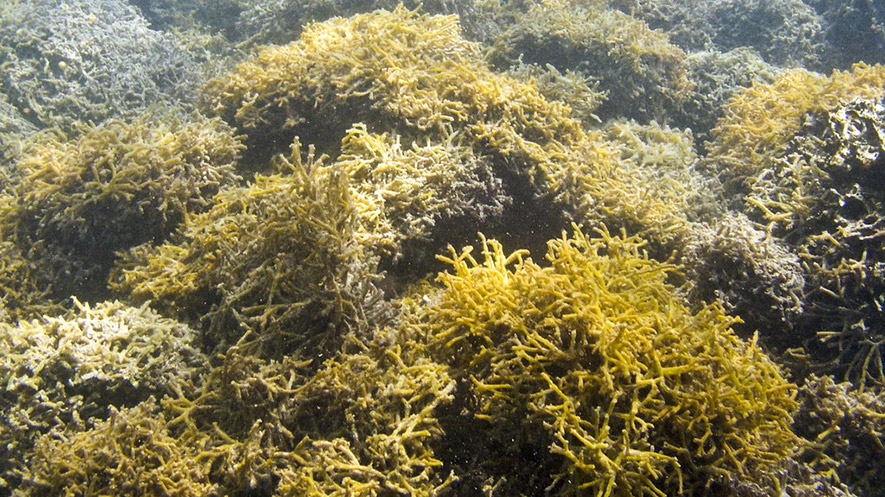Macroalgae, known commonly to most as ‘seaweed’ plays an important role in many of the products we use on a day to day basis from toothpaste to cosmetics. However, intensive algal growth caused by human impacts such as overfishing and climate change is one of the biggest indicators of stress on coral reefs. The effects, often permanent, can reduce biodiversity, diminish the economic value of reefs and even kill them.
A study published October 3, 2018 in the open-access journal PLOS One may have opened a pathway for a rapid and inexpensive way of assessing macroalgal growth on coral reefs, something which is vital if we are to reduce the impacts of algal smothering in the future. Lauren and Simon Freeman of the US Naval Undersea Warfare Center and colleagues have found that the gas bubbles released by marine algae during photosynthesis produce a sound, the intensity of which correlates to the amount of algal cover on coral reefs.
Simon Freeman said: "We discovered that algae make sound by first listening to coral reefs and finding a link between what we heard and how much algae had smothered the coral. Intrigued, we performed experiments with algae in tanks to verify the source, and how the sounds made by algae contributed to coral reef soundscapes." The team designed passive acoustic experiments with the invasive Hawaiian algae Gracilaria salicornia. Ambient sound was recorded in combination with dissolved oxygen and time-lapse photography of algae under daylight and night conditions to investigate the mechanism behind the observed associations of sound with algal cover.
The results found that as the bubble is released from the algae its shape relaxes into a sphere which produces a ‘ringing’ sound ranging from 2 to 20 kiloHertz. The authors noted that the contribution of algae to the oceanic soundscape is one that can be isolated from other forms of bubble making processes, such as crashing waves. This is due to the irregular and unclustered production of sound associated with photosynthesising marine algae. Furthermore, bubble production and sound emission are not unique to this algal species, and so the measurement of this type of sound in marine environments may be a proxy for algal and aquatic plant photosynthetic activity in general. Both factors combined may allow for a rapid, non-invasive and cost-effective means of assessing algal smothering on coral reefs.
Interestingly, the authors have pointed towards the use of this acoustic technique in monitoring primary production on an industrial scale, such as in algae-based biofuel production.
By Ellis Moloney
Simon E. Freeman, Lauren A. Freeman, Giacomo Giorli, Andreas F. Haas. (2018) Photosynthesis by marine algae produces sound, contributing to the daytime soundscape on coral reefs. PLOS ONE, 13 (10): e0201766 DOI: 10.1371/journal.pone.0201766
This work was supported by NSF IGERT grant no. 0903551, U.S. Naval Research Laboratory section 219 program funds, National Research Council and American Society for Engineering Education postdoctoral fellowships and NASA grant no. NASA-14HYSP14-0003.



